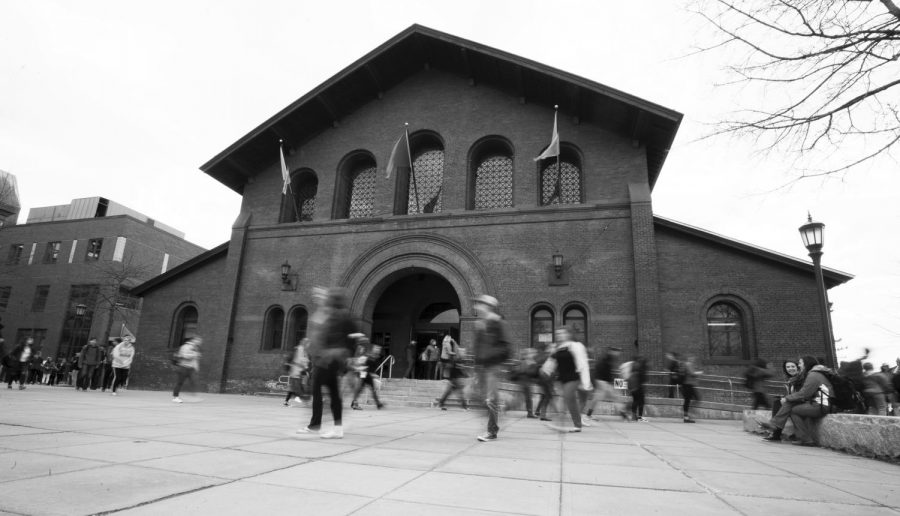First-year retention rate falls behind
Students rush past Royall Tyler Theatre on their way to class. UVM has recently fallen behind other school in relation to its retention rate, which is 86.6 percent, between a class’s first and second fall semesters.
December 6, 2018
UVM has fallen behind its comparative schools in retention rate of students.
Comparative schools, like Boston University, outdo UVM by four to five percent, a trend driven by a need to better connect students with academic opportunities and lower levels of school spirit, said Alexander Yin, director of the Office of Institutional Research.
“There’s a myth that when someone leaves the institution [the reason] is that they failed out, and truthfully that’s not the case here,” he said.
If all students with a 3.0 GPA or higher stayed after their first fall semester, the retention rate would be 92 percent, and if all students with a 2.0 GPA or higher stayed, the rate would be 97 percent.
The current retention rate is 86.6 percent between a class’s first and second fall semesters, Yin said.
A new app, the Guide, is intended to address those issues by better connecting students academically and socially to campus, he said. Yin hopes that expanded learning communities will also help boost retention.
Katie Stango, assistant director for campus programs, said that although UVM has strong participation in its clubs, it has a smaller amount of school spirit than other schools she has seen, particularly when compared to schools with very strong Division I sports programs.
The University tries to reach out to uninvolved students to help connect them on campus, Stango said. For example, when she is helping select UVM Program Board members, she doesn’t consider campus involvement and pushes members to recruit uninvolved students, she said.
Another possibility is that there is declining enrollment from Vermonters, which could contribute to reduced school spirit, Stango said.
Stango said she wonders if the students that are leaving might be disproportionately from marginalized groups, but she is not aware of any data that would indicate whether or not that is accurate.
Overall, UVM is doing well in retention, since retention rates around 80 are generally considered good, Stango said.
“I know there is always room for improvement, especially with peer institutions, but nationwide [87 percent] is still a really strong retention rate,” she said.
Sarah Plutnicki, who began at UVM in the fall of 2016 and studied political science, said she transferred to Clark University for the proximity to her family, lower cost of living and a more personal academic environment.
“UVM says it’s a liberal arts college, but it puts so much more into STEM programs,” Plutnicki said.
UVM’s goal is a 90 percent retention between students’ first and second fall semesters, since UVM’s comparative schools reach 91 to 92 percent retention, Yin said.
“The trick in the game is how do you connect with the 13 percent without ruining the 87 percent that we’re doing well with?” Yin said. “I think we’re going well with the mass but we’re not doing well sometimes at the fringes.”
The comparative schools set by the board of trustees are: College of William and Mary, SUNY Stony Brook, University of Binghamton, University of Colorado Boulder, University of Connecticut, University of Massachusetts Amherst, Boston College, Boston University, Syracuse University and George Washington University, he said.







